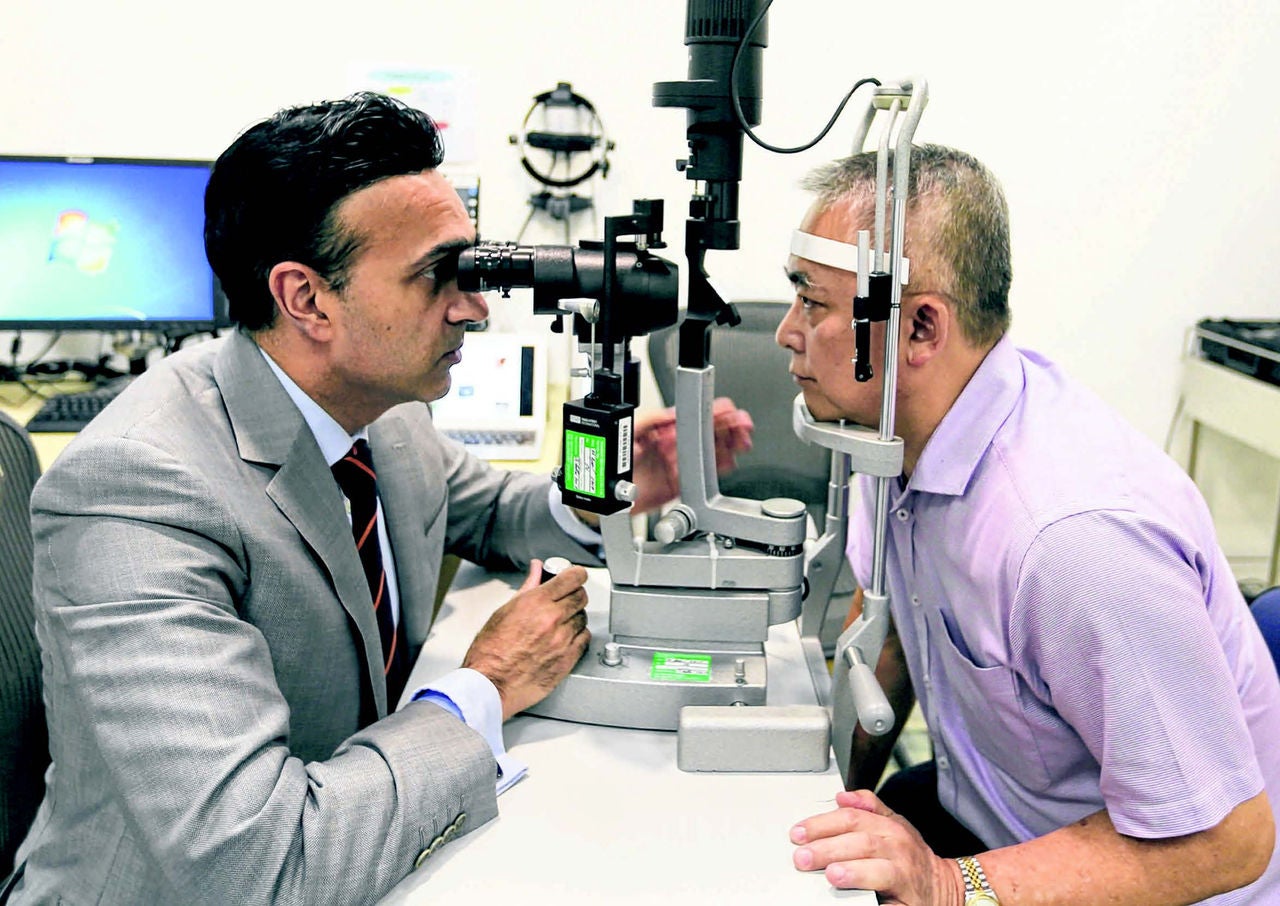
with Mr Tan Beng Wee, who lived with pterygium for 30 years before going for Flaps last year. ST PHOTO: JONATHAN CHOO
More hospitals to offer this treatment for condition affecting 15.5% of population
In July last year , Mr Tan Beng Wee became the first person in the world to undergo femtosecond laser-assisted pterygium surgery (Flaps).
Performed at the Singapore National Eye Centre (SNEC), the new laser surgical technique is used to treat pterygium, an eye condition that affects about 15.5 per cent of the population here. Pterygium is a benign fleshy wing-shaped growth that usually occurs in the inner or outer corners of the eye.
Since Mr Tan’s surgery, 35 successful procedures have been performed at SNEC. Flaps will be rolled out in more hospitals next year.
For 30 years, the 61-year-old businessman lived with persistent discomfort and redness in both of his eyes and also had to contend with unsightly lesions.
A visit to the SNEC in 2014 found that he had pterygium. Left untreated, it could induce astigmatism and cause blurred vision.
“I was quite embarrassed when speaking and making eye contact with others. My eyes were always red and they made people so uncomfortable, some would even look away,” he said.
Mr Tan repeatedly shelved plans to seek medical treatment till last year when the lesions became noticeably larger and began growing towards his pupils.
The current gold standard for pterygium treatment – conjunctival autograft (CAG) – involves using tissue under the patient’s upper eyelid and demands a high level of surgical skill and experience to obtain a thin graft. Complications are more likely to develop if a surgeon is less experienced. Said Associate Professor Jodhbir.
Contributed by

English
The Straits Times - New laser eye op can ease woes of many.pdf

Chinese
Lianhe Wanbao - New laser eye op can ease woes of many.pdf














 Get it on Google Play
Get it on Google Play